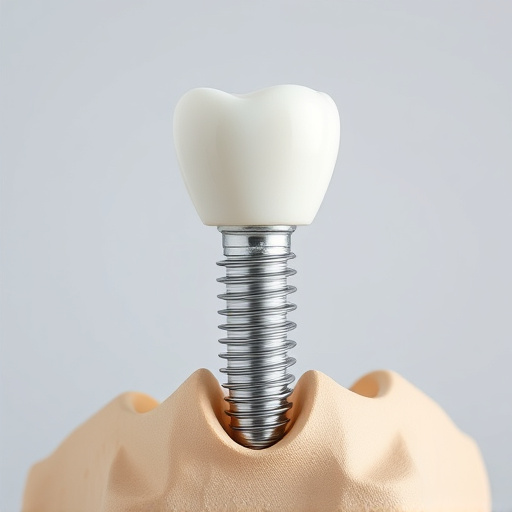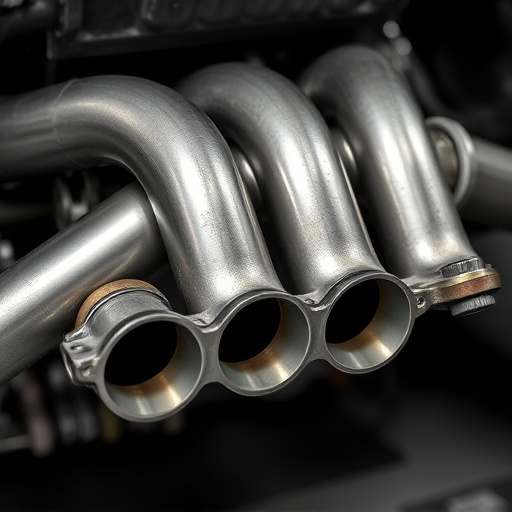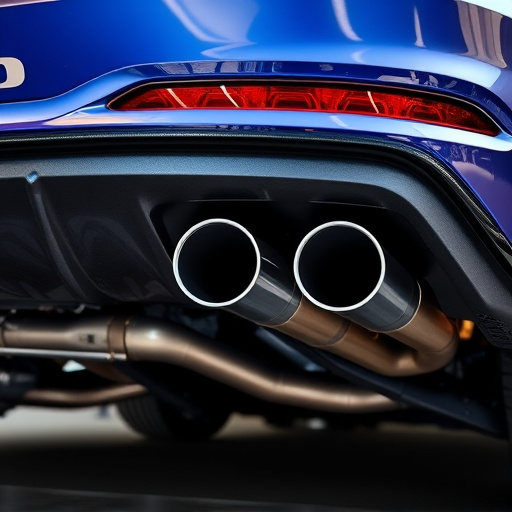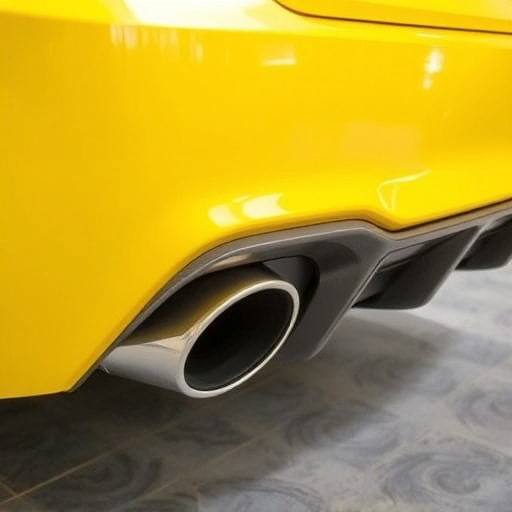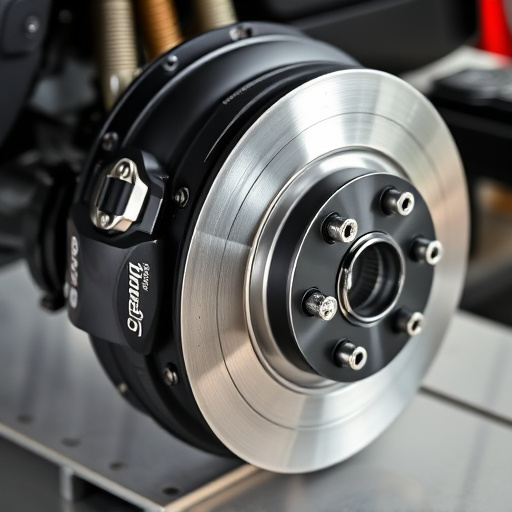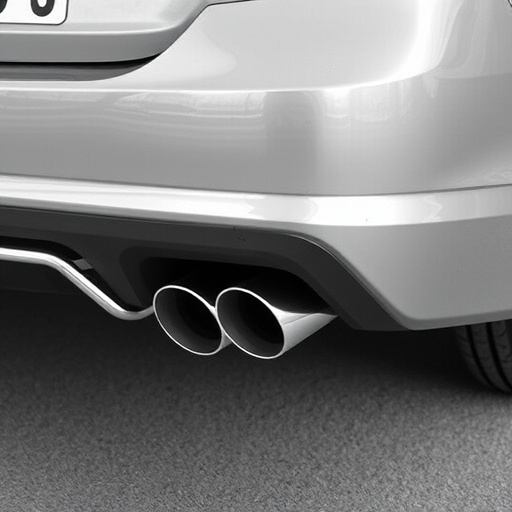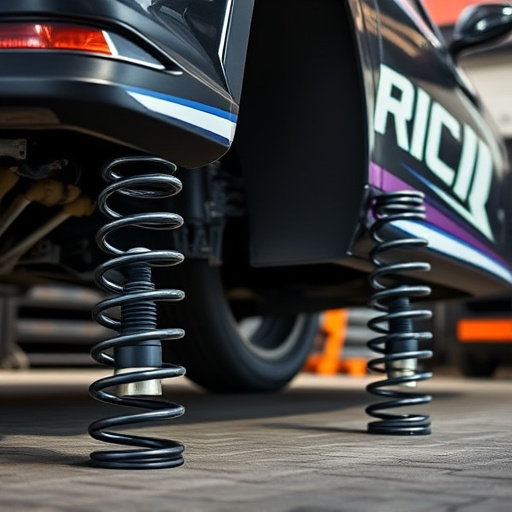Racers optimize engine air intake systems for peak performance through precise tuning, sensor calibration, and upgrades like high-flow intakes and exhaust tips. Custom filters, tailored airboxes, and strategic exhaust mods enhance airflow, power, and efficiency, giving them a competitive advantage on the track while adhering to racing regulations.
Unleash your vehicle’s full potential with optimal engine air intake tuning—a key strategy employed by racers to achieve superior performance. This comprehensive guide delves into the intricacies of engine air intakes, offering a detailed exploration from basics to advanced techniques. Learn about common tuning methods and discover secret strategies recommended by professional racers. By understanding these principles, you’ll gain valuable insights to fine-tune your engine for enhanced efficiency and power.
- Understanding Engine Air Intake Basics
- Common Tuning Techniques for Optimal Performance
- Advanced Strategies Recommended by Racers
Understanding Engine Air Intake Basics
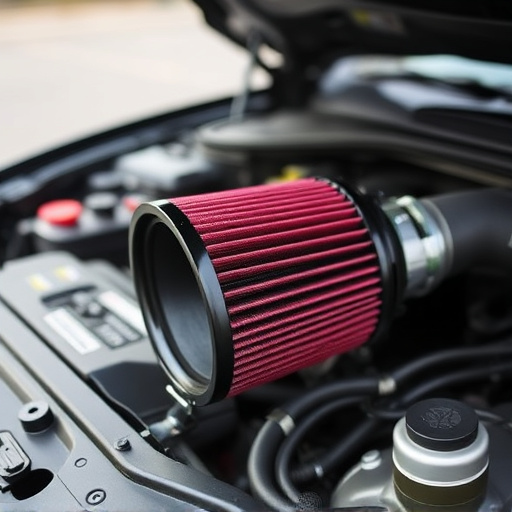
The engine air intake system is a vital component that directly influences an vehicle’s power and efficiency. It’s responsible for drawing in a mix of air and fuel into the engine, where it’s combusted to produce energy. Understanding this basic function is crucial when considering tuning for optimal performance. At its core, the air intake involves several parts: the air filter, which traps contaminants; the intake manifold, that channels air into the cylinder; and the throttle body or valve, controlling air flow.
Proper tuning involves balancing these elements to ensure the engine receives the right amount of oxygen-rich air for efficient combustion. Upgrading components like performance air filters and air filter kits can significantly impact airflow, while adjustments to the throttle body fine-tune the mixture. For racers, this means exploring options like high-flow air intakes, cold air intake systems that draw in cooler air, or even unique designs that enhance turbulence, all aimed at maximizing power and performance, often coupled with high-quality performance brakes for enhanced control on the track.
Common Tuning Techniques for Optimal Performance
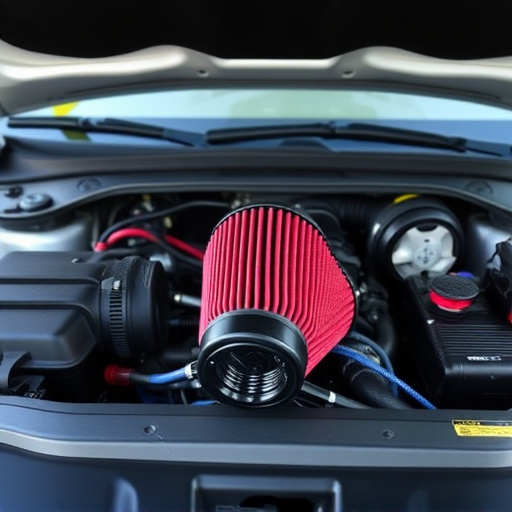
In the pursuit of optimal engine performance, racers often turn to precise tuning of their vehicle’s engine air intake systems. Common techniques include adjustments to the mass air flow sensor (MAF) and fuel injection timing. By optimizing the amount of air entering the engine, racecar drivers can achieve a better power-to-weight ratio, enhancing acceleration and top speed. This fine-tuning process involves carefully calibrating sensors and modifying components like intake manifolds, cold air intakes, and filters to ensure maximum airflow while maintaining engine health.
Additionally, experienced racers might consider upgrading to high-flow exhaust tips or muffler tips for improved gas flow out of the engine, further bolstering overall performance. It’s important to note that these adjustments should be made with a deep understanding of the vehicle’s dynamics and in compliance with racing regulations, ensuring safety and fair competition. Even simple upgrades like high-performance brake pads can complement intake tuning by providing better control during high-speed maneuvers, contributing to overall track proficiency.
Advanced Strategies Recommended by Racers
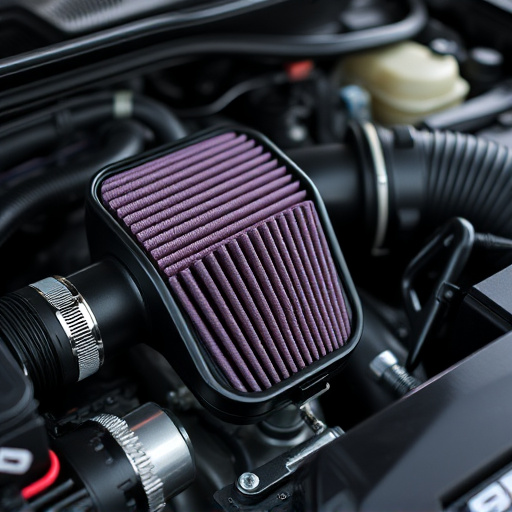
When it comes to pushing their engines to the limit, professional racers know that fine-tuning every aspect of their vehicle is crucial for achieving peak performance. One area often overlooked but with significant potential for improvement is the engine air intake system. Racers recommend employing advanced strategies like custom air filters and optimized airbox designs to maximize airflow. These modifications ensure a steady supply of cool, dense air to the engine, resulting in increased power and efficiency.
Furthermore, experienced racers suggest integrating exhaust systems with carefully chosen exhaust tips and mufflers that not only reduce noise but also smoothen exhaust gas flow. This optimization contributes to better combustion and overall engine health. By focusing on both the intake and exhaust sides, these advanced strategies can deliver a noticeable performance boost, giving racers an edge on the competition track.
In the pursuit of peak performance, understanding and tuning your engine’s air intake is crucial. This article has provided a comprehensive overview, from fundamental air intake basics to advanced strategies employed by racers. By mastering common tuning techniques and exploring advanced methods, you can unlock significant improvements in your vehicle’s power and efficiency. With these insights, you’re well-equipped to fine-tune your engine air intake for optimal performance on the road or track.



